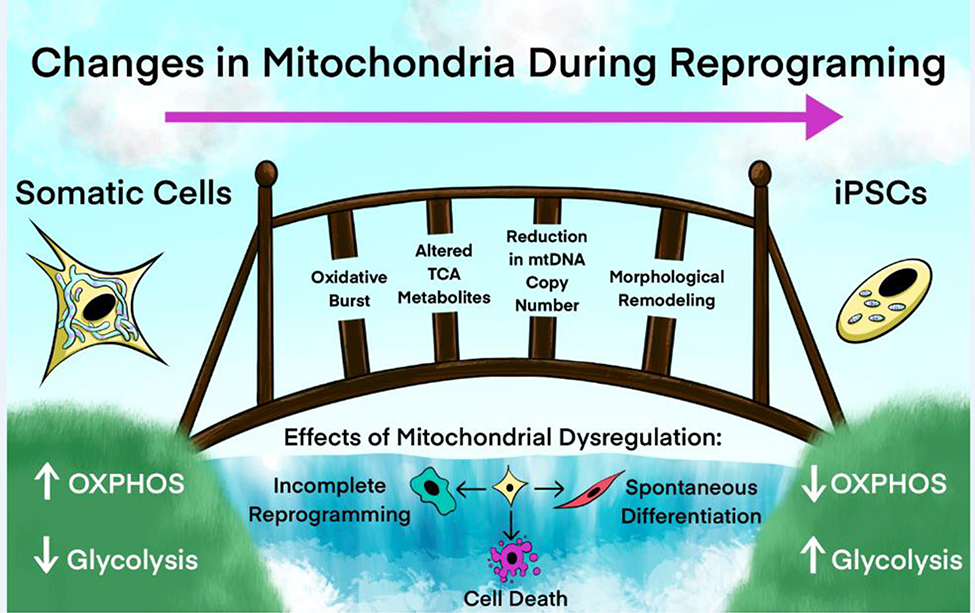Figure 1.
Remodeling of Mitochondrial Metabolism is Required for Cellular Reprogramming to Pluripotency. Somatic cell reprogramming to iPSCs includes a transition in mitochondrial morphology from an elongated, filamentous and branching network structure to a collection of small, punctate, separate organelles. Concurrent with this morphology shift, metabolism skews from mainly OXPHOS in somatic cells used in this illustration towards mainly glycolytic metabolism in reprogrammed iPSCs. Additional changes that occur during reprogramming include a reduction in mtDNA copy number, alterations in TCA cycle metabolite levels, changes in Ca2+ handling and the production of Fe-S clusters, and a required, time-coordinated oxidative burst. Mitochondrial dysfunction can disrupt these key metabolic transitions and may result in incomplete reprogramming, spontaneous differentiation [19], or cell death.

